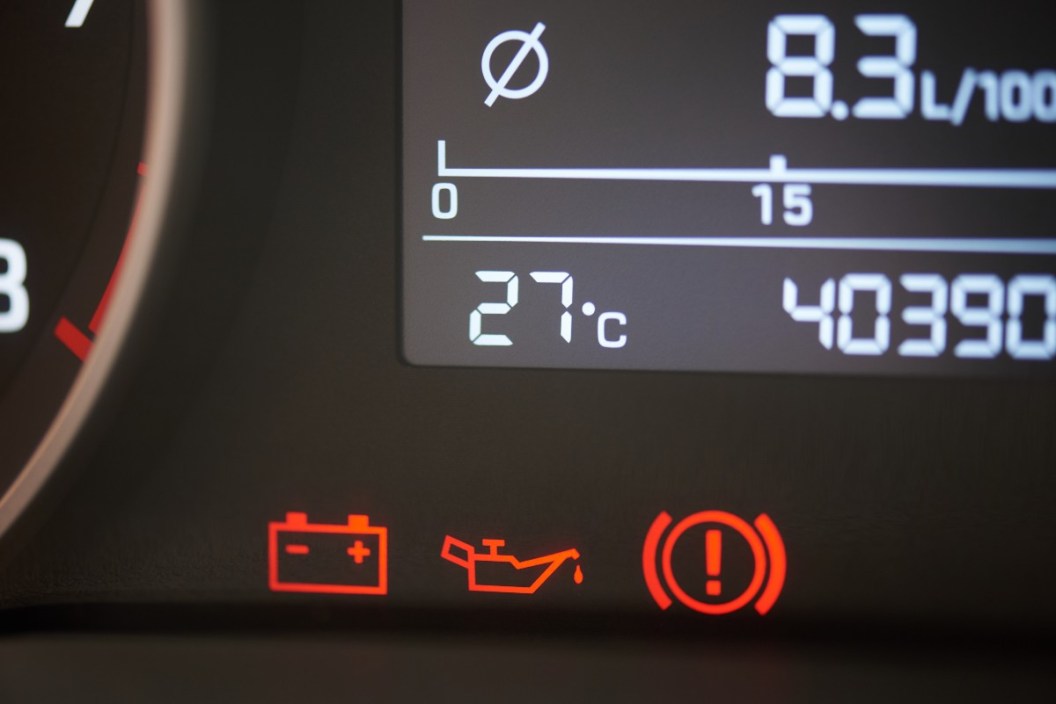If your vehicle has an engine, you need oil. Engine oil does a lot of really important things inside the car. It provides lubrication to those hot, heavy metal parts so they don't overheat or start rubbing together to create sparks. It helps flush all the weird gunk that gets into your engine out. Without oil, your engine would overheat, seize up, and rust out. Probably simultaneously. Just don't try it.
Maintaining an ideal oil level is a really good idea for everything that has an engine. While most of us adhere to the recommended oil change schedule provided in the owner's manual of our vehicle, sometimes life gets in the way. Luckily, many newer vehicles include an oil pressure warning light, so that we're aware of when we have a low oil level.
But, this warning light can actually mean a few different things, so how do you know what to do when the low oil pressure light comes on?
Common Causes of Low Oil Pressure
The oil pressure warning light is an alert from your car's computer that the oil pressure sensor is not sensing enough oil. There are many causes of low oil pressure, ranging from the mundane to the extremely critical. When your oil light comes on, it's a good idea to get yourself to a safe place to stop driving, let your engine cool down, and check out a few things. Don't freak out...yet.
While your car is cooling, take a look underneath to see if there's a noticeable external oil leak. While not all oil leaks result in a puddle of goo under your car, that would definitely be an explanation for the low engine oil light coming on.
Next, check your engine oil levels. Pop the hood, pull out the dipstick, and take a good look at what comes out. Your vehicle requires a very specific engine oil level in order to provide adequate lubrication and to avoid overheating.
Additionally, as your oil flows through the various oil passages within your engine, the viscosity -- or thickness and stickiness -- of oil can change. Some types of oil have a lower viscosity, which helps it flow with less resistance. Higher viscosity oil can lead to a change in oil pressure. Also of note: Weather can play a factor in oil viscosity, as well.
Oil contaminants can also be a problem. The dirt and debris that ends up in your engine is removed by oil, which is a good thing...until the stuff flowing through your engine is more dirt and debris than it is oil.
If you find very little oil clinging to the dipstick, or you pull out a wad of goo, your main problem is that you need new oil. Check your owner's manual for specifics, but most vehicles require an oil change every 3,000 to 5,000 miles, or every three to six months, depending on your driving habits.
The next thing to consider is your air filter. Super dirty oil filters won't let oil flow through at the right pressure level. While there is a pressure relief valve, a severely clogged oil filter will prevent oil from getting where it needs to go. The good news is that changing a filter is a pretty standard procedure that shouldn't cost you an arm and a leg.
Troubleshooting a Low Oil Pressure Warning Light
You don't have to be an automotive expert to diagnose the common causes of the low oil light coming on, but there are some instances in which you might need a gearhead to help you out.
If you have a full, clean oil pan, a brand new oil filter, and you're not known for your lead foot, it is possible that the oil pressure gauge is faulty. Since modern vehicles involve a lot of wires and computers, these signals sometimes get mixed up or confused. A technician can perform a manual test that bypasses the wires and computers to determine if the gauge is the culprit.
Another potential issue is a bad oil pump. A faulty oil pump may make the passages between rotors expand, which can lead to oil pressure drops. It's not common, but it can happen.
Lastly, consider your vehicle's age, and the way you use it. Your car's oil pump helps regulate the amount of oil that flows between the crankshaft bearing and the camshaft bearings. Some of these areas should be very narrow, but wear and tear on the engine can cause motor oil to flow a little too quickly, which will reduce engine oil pressure. You probably won't be able to diagnose this from the parking lot where you stopped to check things out, but it might be something to keep in mind if you drive a lot or have an older vehicle with high mileage.
The good news is that keeping a regular maintenance schedule can help prevent any of these issues. If you do your oil changes at home, make sure you stick to a schedule, and check out the air filter and engine wear as best as you can.
When it doubt, have a professional check it out. While the cost of a technician can cause us to wince, dealing with engine damage is far more expensive and much more emotionally draining. Trust us.
